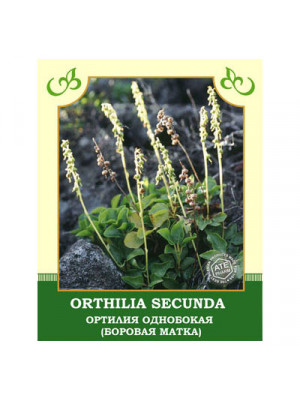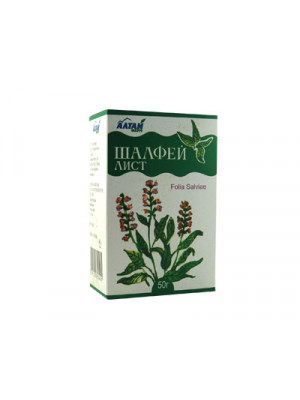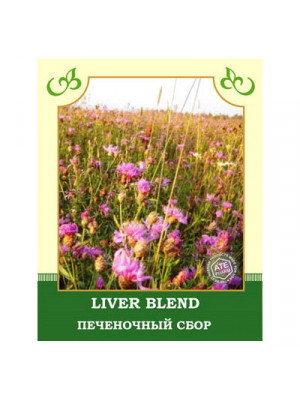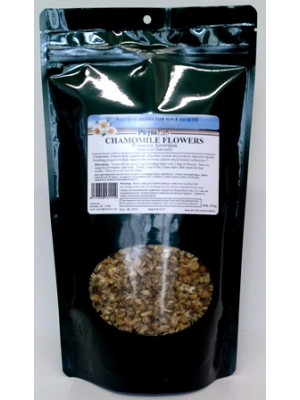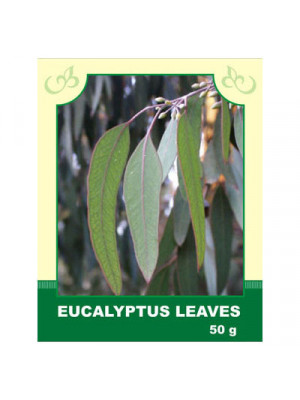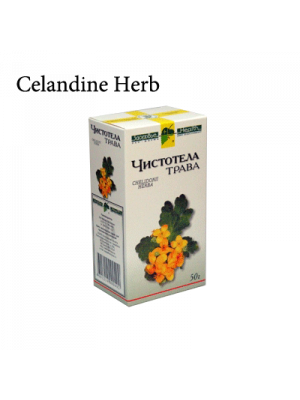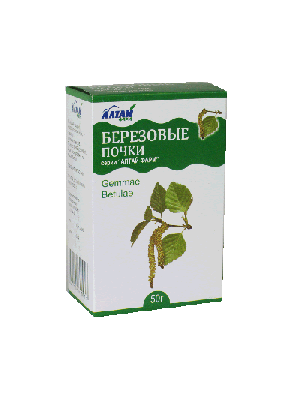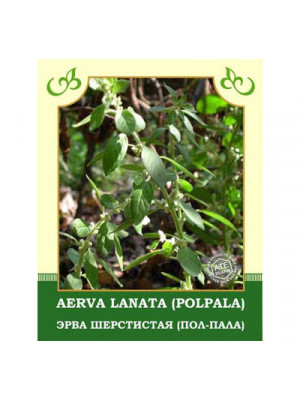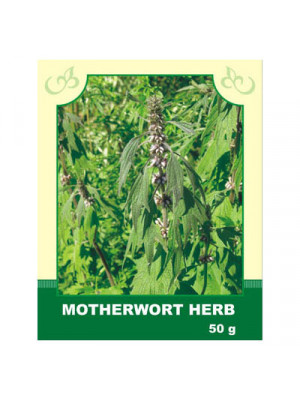Dry Herbs & Berries
If you like to use a lot of dry herbs and berries to create teas, wellness pads and an assortment of other items for well-being, our dry herbs and berries can provide you with a quick way to do it on your own. Each packet contains the herbs or berries of your choice that were freshly grown, chopped up and dried to perfection. Every herb and berries packet is 100% natural, with no artificial preservatives or added fillers. You're able to create a tasty blend with all that is provided from our large selection.
Description. Orthilia Secunda is native for Siberia. This herb consists of tannins, flavonoids, gums, bitters, lemon and tartaric acids, arbutin and saponin. Orthilia Secunda is recommended by herbalists as an herb for gynecological disorders and inflammations. Orthilia Secunda preparations are used for sterility, bleedings, infantilism, cervical erosion, for menstrual cycle derangements, toxicosis. In some countries Orthilia Secunda is used as diuretics and antiseptics for kidney and urinary bladder inflammations. More than that, the decoction of Orthilia Secunda is used as an eye wash.
Attention! Before using any herbal products, make sure that you have full knowledge of how the herb works and any adverse reaction it may cause.$8.99Internally, it is used for diseases of the digestive system, kidney diseases, bladder diseases, nocturnal enuresis, respiratory diseases, flu, weakness of the heart, pulmonary tuberculosis, oncological diseases, headaches, nervous diseases, as well as for roundworms.
Method of application and dosage: 20 g of the herb is poured with 400 ml of boiling water and boiled on low heat until half, strained, and the remaining plant material is squeezed. The obtained infusion is brought to the original volume with boiling water. Take 1 tablespoon internally 3 times a day after meals.
Externally, children with diatheses are washed with an infusion of St. John's wort herb, compresses are applied for rashes and boils, and for diseases of the mammary glands. For external use, 2 tablespoons of raw material are poured with 200 ml of boiling water, infused until cooled. For douching, it is diluted with warm boiled water at a ratio of 1:5.
Contraindications: individual intolerance.
$6.99Internal use: Taken for gastrointestinal spasms, inflammation of the gastric mucosa with reduced acidity of gastric juice, peptic ulcer of the stomach and duodenum, inflammation of the gallbladder and urinary bladder, as an expectorant for upper respiratory tract inflammation, to reduce milk formation in nursing mothers, for infertility, and to improve memory. Considered very effective during the menopausal period.
Application and dosage: Pour 1 tablespoon of raw material with 400 ml of boiling water and infuse for 20-30 minutes. Take 1/4 cup 3-4 times a day.
External use: Used for inhalations, rinses, and compresses to treat stomatitis, upper respiratory tract catarrhs, toothache, inflammatory skin conditions, purulent wounds, and for mild burns and frostbite. Use 2-3 tablespoons of finely chopped dry leaves per 500 ml of boiling water.
Contraindications: Individual intolerance, acute nephritis, pregnancy.
$6.99Composition: marigold, flax seeds, yarrow, watercress, licorice, flax seeds, milk thistle fruits.
For liver diseases, gallbladder and bile ducts, hepatitis, cholecystitis, gallstone disease, helps remove cholesterol from the body.
$5.40
Description. Chamomile has been known of since ancient times and has been called the plant's physician because ailing garden plants recover when it is planted close to them. Chamomile is one of the most widely used ingredients in herbal teas worldwide. An infusion of the flowers is taken internally as an anodyne, anti-inflammatory, antiseptic, antispasmodic, carminative, cholagogue, diaphoretic, emmenagogue, febrifuge, sedative, stomachic, tonic and stimulating metabolism. In particular it is an excellent herb for various digestive disorders, nervous tension and irritability and is also used externally for skin problems. Use. An infusion is particularly useful as a stomachic, nervine and sedative for young children, especially when they are teething. It is also used for irritable bowel syndrome, peptic ulcers and hiatus hernia. In large doses, or when taken regularly for several times each day, the tea can be emetic and can also cause the symptoms it is intended to cure. The flowers are also used externally to treat wounds, sunburn, burns, hemorrhoids, mastitis and leg ulcers. We believe that every home should have therapeutic chamomile in their medicine cupboard - especially where there are young children.
Warning! Before using any herbal products, make sure that you have full knowledge of how the herb works and any adverse reaction it may cause.$9.99Internally. Eucalyptus is taken for abdominal pain and gastritis with reduced acidity, bronchial asthma, acute respiratory diseases, pleurisy, bronchitis, and tracheitis. Eucalyptus preparations have disinfectant, anti-inflammatory, analgesic, and antimicrobial properties.
Method of application and dosage: Boil 10 g of dried crushed raw materials for 15 minutes in 1 cup of water, strain, and bring the volume to the original one with boiled water. Take from 1 tablespoon to 1/4 cup 3-4 times a day, starting with a smaller dose and increasing with each intake.
Externally used for rinsing and inhalations in laryngitis, tracheitis, catarrhal and purulent bronchitis, abscesses and gangrene of the lungs, for washing infected boils, wounds, fistulas, ulcers, inflammation of the genital organs, for blepharitis in ophthalmic practice. For external use, prepare based on 2 tablespoons of leaves per 0.5 liters of boiling water.
Contraindications: Individual intolerance.
$6.99Internal use: Tansy treats hypertension, asthma, anemia, atherosclerosis, food poisoning, flu, soft tumors (fibroids), polyps in the colon, hemorrhoids, gastritis, goiter, gout, rheumatism, ulcers of the gastrointestinal tract, liver, gall bladder, kidneys, and heart muscle.
Application and dosage: Place fresh herb in a 500 g jar, filling half of the volume. Pour boiling water, cover with a lid. (For an infusion of dry herb, fill 1/4 of the jar). After cooling, drink twice a day, 100 ml each time, 10-15 minutes before meals. The infusion color is dark, and the taste is bitter.
External use: Infusions of the herb and root are used for baths, washes, and compresses for various skin conditions (rashes, lichen, boils), jaundice, purulent wounds, and ulcers. Infected, slow-healing ulcers and wounds are treated with a powder made from the leaves. Pour 30 g of raw material with 1 liter of boiling water, infuse for 3-4 hours, strain, and apply as directed.
Contraindications: Individual intolerance, epilepsy, angina pectoris, bronchial asthma, neurological diseases. A poisonous plant that requires caution in use.
$6.99- Birch Buds contain volatile oils, ascorbic acid, bitters, flavonoids, tannins, sugars. Decoction and infusion of birch buds are considered to have diuretic, antiseptic, anti-inflammatory, cholagogic and wound healing properties. Some medics observed great increase of urination under influencing of this decoction and substantial abatement of edemas even when other heart and the diuretics did not help.$9.99
Folk beliefs attribute unique abilities to common yarrow, such as preventing the formation of blood clots in vessels and reducing blood clotting.
Internally, it is taken as a remedy for bronchitis, tracheitis, common colds, reducing inflammation, clearing the respiratory tract from toxins and mucus, and for diseases of the urogenital system and reproductive organs. It normalizes the functioning of the gastrointestinal tract, liver, and pancreas. There is evidence of high effectiveness in cases of intestinal polyps and hemorrhoids, as well as for relieving constipation.
Method of application and dosage: Place 2 teaspoons of crushed herb in a teapot, pour 250 ml of water, boil for 3-5 minutes, and let it steep for a short while. Consume by adding sugar or honey to taste.
Contraindications: Individual intolerance; during intake, it is advisable to exclude spicy and salty foods, as well as alcohol from the diet.
$6.99Internally, it is taken for nervousness, cardiomyopathy, insomnia, neurasthenia, depression, venous-vascular dystonia, gastrointestinal disorders, enlarged thyroid gland, inflammation of the intestines, scanty menstruation, initial stages of hypertension, increased nervous excitability, especially associated with menopause in women and prostate hypertrophy in men.
Method of application and dosage: Steep 15 g in 200 ml boiling water, boil on a water bath for 15 minutes, infuse at room temperature for 45 minutes, strain, squeezing the remaining raw material. Bring the ready infusion to the original volume with boiling water and take 1 tablespoon 3-4 times a day before meals.
Externally, it is applied for burns, as it has a strong anti-inflammatory and antibacterial effect. Steep 2 tablespoons in 300 ml boiling water, infuse for 1 hour, and use as directed.
Contraindications: Individual intolerance, bradycardia, or arterial hypotension.
$5.99


